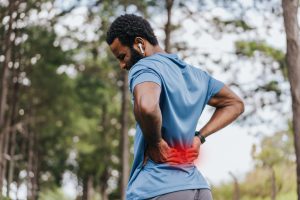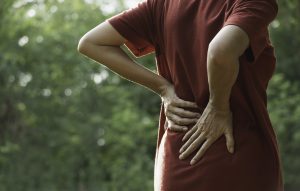Cervical Spinal Stenosis Condition Animation
Spinal stenosis is a condition that causes a narrowing of the spinal canal, which can compress the spinal cord or nerves, resulting in pain, weakness, numbness, and other symptoms. When this condition occurs in the upper or cervical region of the spine in the neck it is referred to as cervical stenosis.
Causes Of Spinal Stenosis
Cervical stenosis is most frequently caused by degenerative changes, including osteoarthritis, in the neck. After years of normal wear and tear, cushioning between bones in the spine may break down, allowing bones to wear against each other. At these sites, the body produces growths called bone spurs that may narrow the spinal canal, causing pressure on the spinal canal enough to compress the spinal cord.
Treatment
Cervical Stenosis may or may not require treatment depending on whether symptoms include pain or disability. Nonsurgical treatments may include modifying activities to reduce stress on the spine, physical therapy, medications, injections to reduce pain and inflammation, or wearing a brace. In severe cases or those that are progressively worsening, physicians may recommend surgery to correct the condition.
Common Spinal Stenosis Symptoms
A narrowing of the spinal canal typically doesn’t cause symptoms unless it progresses to a point where it significantly compresses the spinal cord or nerves. When this happens, intermittent or chronic pain, numbness, or weakness may be felt in the neck and shoulders and may extend down the arms to the hands. The neck pain is often described as stiffness, and people often complain of numbness or heaviness in the arms and hands. When the spinal cord is compressed, there can be shock-like pain down the arms and legs, difficulty using arms and hands, or difficulty walking.
If you’re living with spinal stenosis in the upper spine and searching for relief, reach out to BEST Health System for help. Our multidisciplinary team is dedicated to helping people develop the right care plan to reach treatment goals and achieve lasting relief.
If you have experienced any of these symptoms or recieved a diagnosis and need treatment, BEST can help. Take the first step towards relief today.
Related Articles
The Anatomy of a Spinal Cord Stimulator
What is a Spinal Cord Stimulator? A spinal cord stimulator is a surgically implanted modern medical device that offers relief to patients who experience severe […]
Understanding and Preventing Nerve Damage
Understanding Nerve Damage Nerve damage, or neuropathy, is one of the most frustrating conditions because it is incredibly difficult to manage. Unlike a broken bone […]
Can Stabilization Surgery Treat Spinal Stenosis?
Stabilization Surgery Doctors commonly recommend spinal stabilization surgery to patients with severe spinal stenosis. The purpose of this surgery is to remove the damaged part […]
Four Ways Foraminal Stenosis is Similar to Spinal Stenosis
Foraminal Stenosis Learning that you have foraminal stenosis (sometimes called foraminal narrowing) can be overwhelming. Especially if you don’t understand your condition, what it means, […]
Can a Sports Injury Cause Canal Stenosis?
Sports Injuries Causing Spine Conditions Participation in sports is a leading cause of spinal canal stenosis among athletes and younger individuals. Those who participate in […]
Spinal Narrowing Symptoms
Spinal Narrowing Symptoms The symptoms of spinal narrowing vary depending on the location of the condition. For some, this condition causes neck pain. For others, […]
Diagnosing Spinal Stenosis
What is Spinal Stenosis? Spinal stenosis is defined as a narrowing of either the spinal canal or the small spaces nerve roots use to exit […]
Spinal Stenosis Treatment Options
A common symptom of spinal stenosis, which is the narrowing of the spinal canal, is leg pain and weakness. This is especially true if the […]
What Causes Spinal Stenosis?
What is Spinal Stenosis? The narrowing of the spinal canal, also known as spinal stenosis, is one of the most common spine conditions. The central […]
Diagnosing Spinal Stenosis
Spinal Stenosis Diagnosing spinal stenosis should always involve a full evaluation conducted by your doctor. While many people may read about the symptoms of spinal […]
A Guide to Spinal Stenosis Pain
Spinal Stenosis Pain Spinal stenosis pain can originate in the neck or lower back. The symptoms can be extremely disruptive to your normal activities. Many […]
Injections to Treat Spinal Stenosis
What is Spinal Stenosis? Spinal stenosis is described as the narrowing of the spinal canal in your lumbar or lower back. As the spinal canal […]










